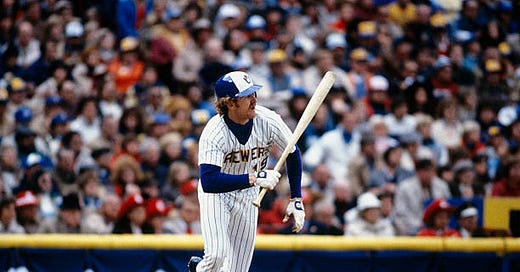Baseball is full of them, the landmark numbers that stick with us and seem to signify something.
For individual seasons, we have a specific idea of what it means if a player reaches 20 wins, or 100 RBI, or 200 hits, or 40 saves, or hits 30 homers while stealing 30 bases, or has a batting overage over .300 or an ERA under 3.00. For careers, the numbers are similar but typically bigger. Did the guy get to 300 wins, or 200, or even 150 nowadays? Did he hit 300 or 400 homers? Did he knock in 1,000 runs, of save 300 games, or strike out 3,000 hitters? Sometimes there are junior milestones along the way, like 1,000 hits, and then 2,000. The same for strikeouts. Oh, he got to 200 homers already? That’s great, let’s see if he gets to 300 or more.
With the exception of specific records that have been set, like 511 wins, or 5,714 strikeouts, or 763 homers, all of these landmarks are round numbers. We don’t care if a guy hit 442 homers. We care only that he managed to hit 400 but then didn’t get to 500. Where he landed in between is usually immaterial to us.
That focus has led to some pretty silly arguments over the years. For a while there was real discussion over whether Johnny Damon would reach 3,000 career hits and then voters would “have to” elect him to the Hall of Fame, as if he was a kid who found a Golden Ticket to tour the Wonka chocolate factory. The fact that he got “only” 2,769 hits allowed them to instead judge him for what he actually was instead of what they felt that big round number represented.
Keep reading with a 7-day free trial
Subscribe to Lost in Left Field to keep reading this post and get 7 days of free access to the full post archives.



